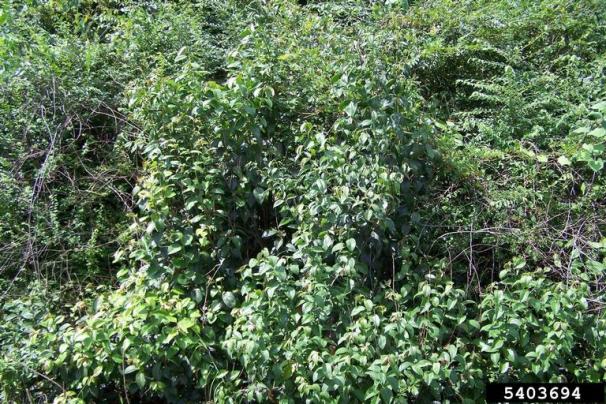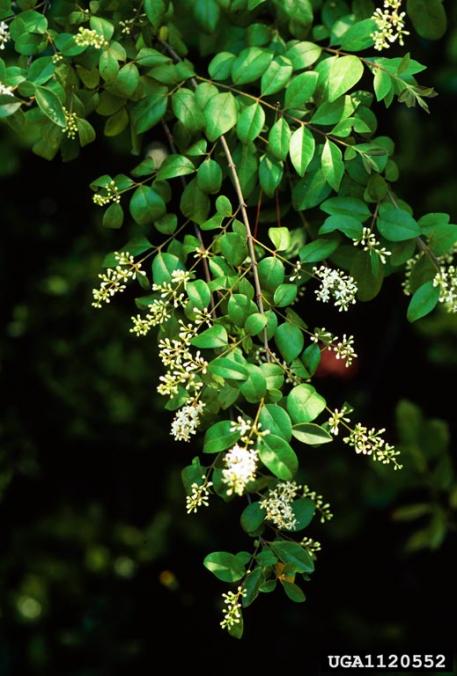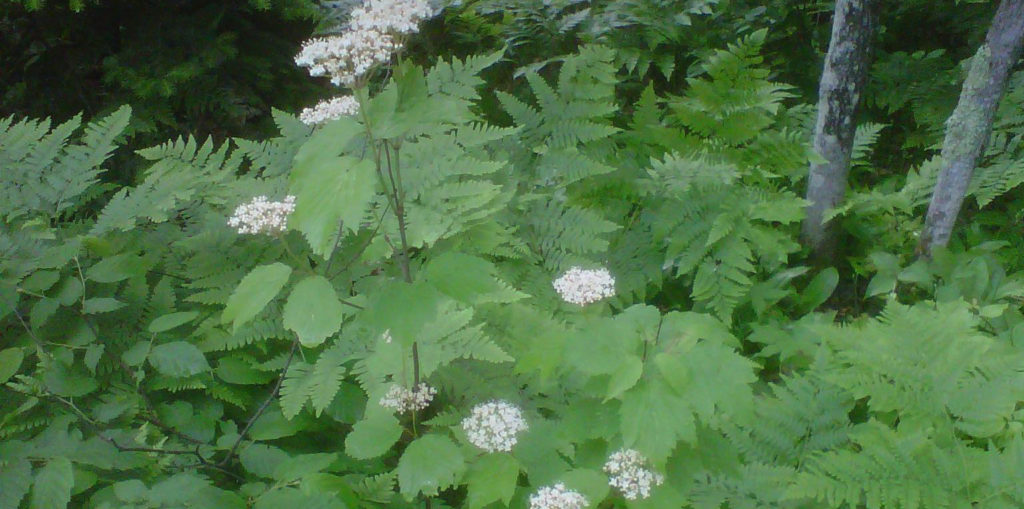Japanese/Glossy and Chinese/European Privet
Privet is commonly used as a hedge and is capable of invading natural areas such as floodplain forests and woodlands. Privets out-compete desirable plants by aggressively forming dense thickets.
Japanese/Glossy privet (L. lucidum)

Japanese/Glossy privet (L. lucidum) is a large shrub or tree that grows to 30 feet, with spreading branches. Leaves are ovate to somewhat lanceolate and three to five inches long.
Chinese/European privet (L. sinense)

Chinese/European privet (L. sinense) is smaller than Japanese privet, growing to only 20 feet. Leaves are elliptical, one to three inches long and pubescent on the midrib below.
About Privet
In 1852, privet was introduced to the United States for use as an ornamental shrub and is still commonly used as a hedge. Ligustrum spp. (privet) are perennial shrubs that can grow up to 16 feet in height. The bark is grayish-tan with a smooth texture. Leaves are oval-shaped, oppositely arranged on twigs.
Privet is an invasive weed and should be treated as such.
Each flower has petals fused into a tube with four separate lobes. The oblong, blue/black fruit is a drupe containing 1 to 4 seeds. Fruit clusters live through the winter. It grows readily from seed or root and stump sprouts. Wildlife can aid in the dispersal of the seed, often relocating the plant over long distances.
Threat
It is capable of invading natural areas such as floodplain forests and woodlands. The aggressive nature of privets allows for the formation of dense thickets that out-compete desirable plants. The amount of seed produced by privet is another mechanism for its prolonged survival.
Even though privet is still used in the landscape and available for purchase at garden centers and online distributors, it is an invasive weed and should be treated as such.
Control
Ligustrum spp. control methods include mechanical controls such as mowing and cutting, physical control such as seedling removal and burning, and chemical control such as herbicide application.
Herbicide control measures include:
- Foliar spraying in late autumn or early spring with glyphosate, triclopyr, or metsulfuron
- Cut stump applications using glyphosate or triclopyr
- Basal bark applications of triclopyr
Prevention
The first step in preventative control of privet is the removal of existing plants within the landscape and to limit planting. If possible, removal should occur before seeds are produced. Since seeds remain on the plant for several months, care must be exercised to prevent seed spread and dispersal during the removal process.
For smaller infestations or areas where herbicide applications are not feasible, continuous mowing will work, but frequency is key. Hand pull young seedlings and small plants. Larger plants may need to be dug out. Plants should be pulled as soon as possible, before they produce seeds. The entire root must be removed to prevent resprouting.
Foliar sprays are effective for dense thickets of Ligustrum. The basal bark method consists of a mixture of 25% triclopyr and 75% horticultural oil applied to the basal parts of the shrub to a height of 12 to 15 inches from the ground. Thoroughly spray until run-off is noticeable at the ground line.
Alternatives
Instead of planting privet or any other Ligustrum species, plant mapleleaf viburnum, Viburnum acerifolium. This native shrub grows in shade or partial sun and compliments yards with a dense canopy and a layer of understory trees. The fruits provide food for lots of wildlife, including wild turkey, bluebirds, cardinals, crested flycatchers, brown thrashers, hermit thrushes, cedar waxwings, pileated woodpeckers and white-tailed deer. Flowers and immature fruit provide food for the caterpillar of Henry’s elfin butterfly.

(Photo by Elmer Verhasselt, Bugwood.org)
Contact MFC for more information
For more information about invasive plant species in Mississippi, email comments@mfc.ms.gov.
